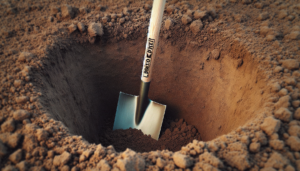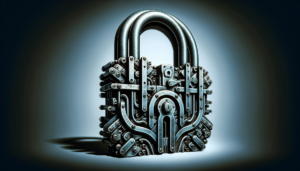
Ensuring the safe storage of firearms within your home is of utmost importance, both for the well-being of yourself and your loved ones, as well as for the security of others who may come into contact with these weapons. The responsibility that comes with owning firearms requires an unwavering commitment to safety, and understanding how to store them securely is a vital aspect of this commitment. In this article, we will explore various essential tips and best practices that will guide you in the proper and secure storage of firearms within your home environment. By implementing these strategies, you can ensure peace of mind while maintaining the highest level of safety standards.
Choosing a Safe
When it comes to storing firearms safely at home, choosing the right safe is crucial. There are several factors to consider when evaluating your needs and budget. Firstly, determine the number of firearms you need to store and any additional items such as ammunition or accessories. This will help you determine the size and weight capacity of the safe. Additionally, consider your budget and look for a safe that provides the level of security and features you require within your price range.
One of the key factors to consider when choosing a safe is its resistance to fire and water. Look for safes that are specifically designed to withstand high temperatures and protect your firearms from water damage in case of a fire or flood. Fire resistance is typically measured in minutes, so consider the average response time of fire departments in your area when deciding on the level of fire resistance you need.
Another important factor to consider is pry resistance. A safe with pry-resistant features will make it difficult for intruders to gain unauthorized access. Look for safes with solid construction, reinforced doors, and pry-resistant locking mechanisms. This will provide an added layer of protection to your firearms.
Lastly, pay attention to the locking mechanism of the safe. Look for safes that have secure and reliable locking mechanisms, such as electronic locks or biometric fingerprint scanners. This will ensure that only authorized individuals can access your firearms.
Safe Placement
After choosing the right safe, it is important to consider the placement of the safe within your home. Selecting a secure location is vital to ensure the safety and security of your firearms.
When choosing a location for your safe, consider both accessibility and security. You want to ensure that the safe is easily accessible to you, but not to unauthorized individuals. Place the safe in an area of your home that is less likely to be targeted by burglars, such as a basement or a dedicated gun room. Avoid placing the safe in obvious locations, such as the master bedroom or closet, as these are typically the first places burglars will check.
An additional step you can take to enhance the security of your safe is to secure it to the floor or wall. This will make it even more difficult for thieves to steal the safe or remove its contents. Follow the manufacturer’s instructions or consult with a professional if you are unsure about the proper method of anchoring the safe.
Organizing Firearms
Once you have chosen a safe and determined its placement, organizing your firearms within the safe becomes important. Keeping firearms separate and organized will not only make it easier for you to access them but also reduce the risk of accidents or damage.
Consider using gun racks or shelves within the safe to keep your firearms organized. This will prevent them from scratching or damaging each other. Additionally, grouping firearms by type or use can make it easier for you to find the specific firearm you need.
For added organization and security, consider using gun safes or cases within the larger safe. This will provide an additional layer of protection for your firearms, preventing unauthorized access and reducing the risk of damage or theft.
Ammunition Storage
When it comes to firearm safety, storing ammunition properly is as important as storing the firearms themselves. It is crucial to keep ammunition separate from firearms and store it securely.
Store ammunition separately from firearms in order to prevent accidental discharge or unauthorized access. Use locking containers or safes specifically designed for ammunition storage. These containers will provide an extra level of security and ensure that only authorized individuals can access the ammunition.
It is also important to follow proper storage guidelines for each type of ammunition. Store ammunition in a cool and dry place to prevent deterioration. Avoid storing ammunition in areas prone to extreme temperatures or high humidity, as it can compromise the quality and reliability of the ammunition.
Safe Maintenance
Regular maintenance of your safe is essential to ensure its continued functionality and reliability. It is important to regularly inspect and clean the safe to keep it in optimal condition.
Inspect the safe regularly to check for any signs of damage or wear. Pay particular attention to the locking mechanism and ensure that it is functioning properly. If you notice any issues or malfunctions, consult with the manufacturer or a professional locksmith for repairs or replacements.
If your safe uses electronic locks, remember to replace the batteries periodically to avoid lockouts. It is recommended to change the batteries at least once a year, even if the safe is still functioning properly. This proactive approach will help prevent any unexpected lockouts and ensure uninterrupted access to your firearms.
Consider scheduling professional maintenance or repairs for your safe. A professional locksmith or safe technician can perform a thorough inspection and make any necessary adjustments or repairs to keep your safe in optimal condition. Regular professional maintenance can help extend the lifespan of your safe and ensure its continued reliability.
Security Measures
While a safe provides secure storage for your firearms, it is important to implement additional security measures to protect your home and family. Here are some security measures you can consider:
Install a security system that includes alarms and monitoring to deter burglars and quickly alert you and the authorities in case of a break-in.
Use surveillance cameras to monitor the exterior and interior of your property. Visible cameras can act as a deterrent, while hidden cameras can provide evidence in case of a security breach.
Secure windows and doors with sturdy locks and reinforce weak points to make it more difficult for intruders to gain access.
Consider using access control systems for entry points. These systems can include keypads, key cards, or biometric scanners to limit access to your home and prevent unauthorized individuals from entering.
By implementing these security measures, you can enhance the safety and security of your firearms and your home as a whole.
Education and Training
In addition to proper storage and security measures, it is essential to prioritize education and training when it comes to firearm safety. Educating yourself and other family members about firearm safety can greatly reduce the risk of accidents and promote responsible gun ownership.
Enroll in a firearm safety or training course to acquire the necessary knowledge and skills for safe firearm handling. These courses are designed to teach you the fundamentals of firearm safety, storage, and use, as well as state and local laws and regulations.
Practice safe handling and storage techniques regularly to reinforce the knowledge acquired through training. Ensure that all family members who may come into contact with firearms understand and follow these safe practices.
Create a family emergency plan that includes clear instructions on what to do in case of a home invasion or other emergency situation. Regularly review and practice this plan to ensure everyone is prepared and knows what to do to stay safe.
Legal Requirements
When owning firearms, it is crucial to familiarize yourself with the applicable federal, state, and local laws and regulations. Research the specific laws governing firearm ownership, storage, transportation, and use in your jurisdiction to ensure compliance.
Obtain any necessary licenses and permits required for firearm ownership in your area. Some jurisdictions may require background checks or additional training before issuing a license or permit.
Additionally, familiarize yourself with any registration requirements for firearms. Some states or localities may require you to register your firearms, ensuring that they are traceable if lost or stolen.
Comply with storage and transportation laws to avoid any legal consequences. Some jurisdictions may have specific requirements regarding the storage of firearms at home, such as using locking devices or storing them in a safe. Additionally, ensure that you comply with any regulations regarding the transportation of firearms, both within your state and when crossing state lines.
Child Safety
When storing firearms at home, ensuring the safety of children is of utmost importance. Implementing child safety measures will help prevent accidents and keep firearms out of reach and sight of children.
Secure firearms and ammunition out of the reach and sight of children. Store them in locked safes or cabinets that are inaccessible to young ones. If possible, store the keys or combination in a separate location to further prevent unauthorized access.
Utilize child-resistant locks or safes to add an extra layer of protection. These locks are specifically designed to prevent children from gaining access to firearms. However, remember that no lock is entirely foolproof, and education about firearm safety is equally important.
Teach children about firearm safety at an age-appropriate level. Emphasize the importance of never touching firearms without adult supervision and what to do if they encounter a firearm in an unsupervised situation. Reinforce these lessons regularly to ensure children understand and remember them.
Practice responsible storage habits and lead by example. Storing firearms safely and securely sends a strong message to children about the importance of responsible gun ownership and safety.
Disposal of Firearms
If you ever find yourself needing to dispose of firearms, it is crucial to do so properly and in accordance with local regulations. Improper disposal can lead to potential safety hazards or legal consequences.
Research local regulations and guidelines regarding firearm disposal. Contact your local law enforcement agency or firearms licensing office for guidance on the proper procedures and options available for disposal.
Consider transferring firearms to licensed dealers or participating in buyback programs. Licensed dealers can legally acquire firearms, and buyback programs offer a safe and legal way to dispose of unwanted firearms while providing compensation.
It is important to follow the prescribed disposal process to ensure the safe and responsible handling of firearms that are no longer needed or wanted.
By following these comprehensive guidelines for storing firearms safely at home, you can ensure the security of your firearms, protect your family, and maintain compliance with legal requirements. Remember, responsible firearm ownership starts with proper storage and education.







